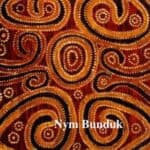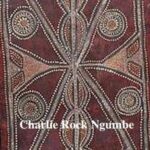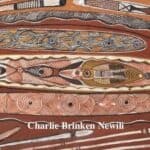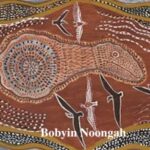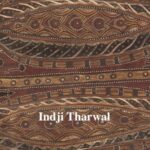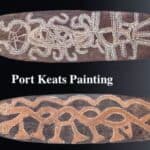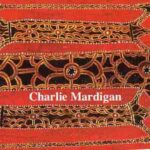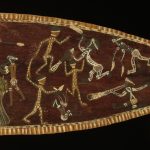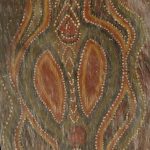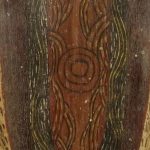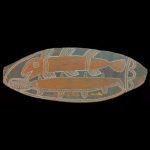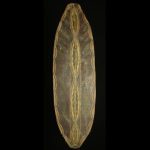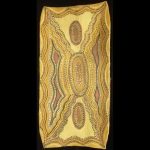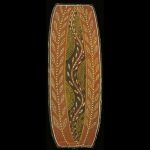Port Keats Rainbow serpent Bark painting
Bark painting from Port Keats depicting the Rainbow Serpent
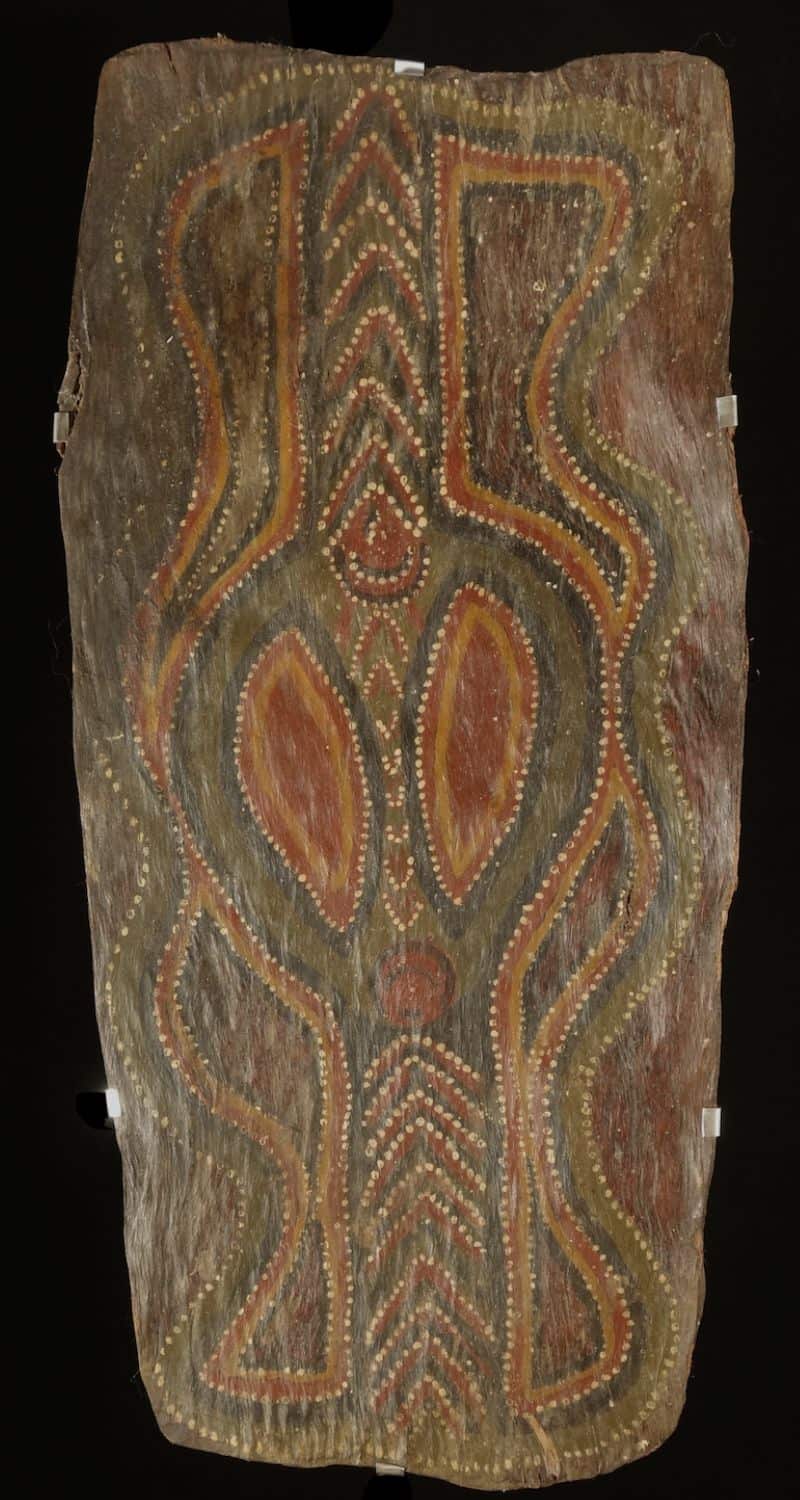
Object type: Aboriginal Bark painting
Locality: Port Keats Australia
Artist: Unknown
Circa: 1960’s
Length: 51 cm
Description: This old bark painting comes from Port Keats and is likely to be from the late 60’s early 70’s. The bark is wrinkled but still presents well and comes with a custon backing frame ready to hang
Price: SOLD
Article on Port Keats Barks
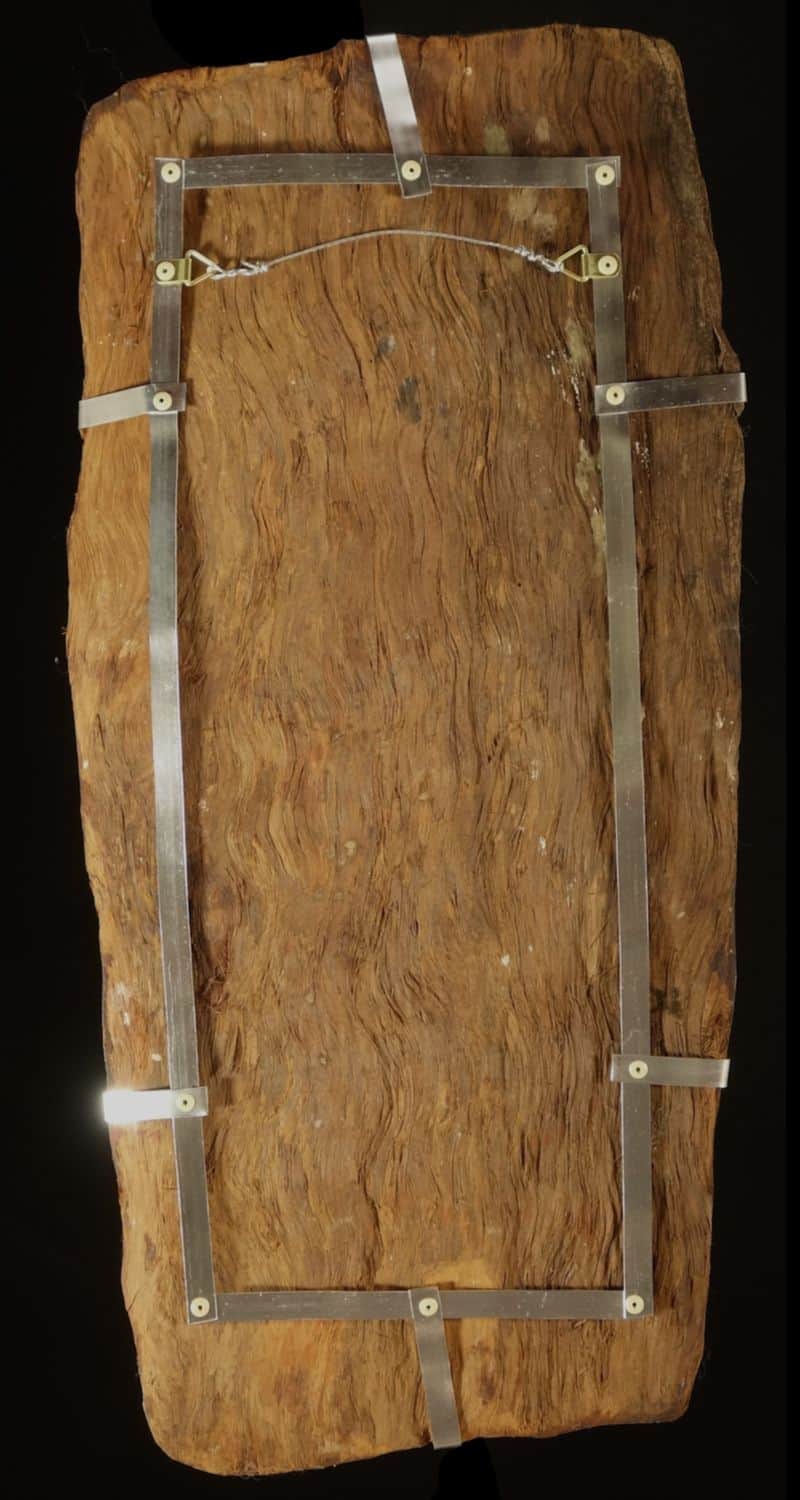
Other Port Keats Articles and Artworks
Other Artworks For sale
The Rainbow Serpent
The Rainbow Serpent is a prominent figure in Aboriginal mythology and plays a crucial role in understanding the culture and beliefs of Indigenous Australians. Revered across many Aboriginal tribes, this mythical creature is a symbol of creation, fertility, and natural forces. Known for shaping landscapes and controlling water, the Rainbow Serpent remains a central part of Aboriginal Dreamtime stories, representing a powerful connection between the earth, people, and spirituality.
What is the Rainbow Serpent?
The Rainbow Serpent is often depicted as a large, colorful serpent that travels across the land, shaping it as it moves. This figure is associated with water, rain, and the creation of landscapes. The serpent’s movement is believed to have carved out valleys, rivers, and mountains, creating the physical world as we know it. In many stories, the Rainbow Serpent is seen as the creator of the earth, responsible for bringing water to the land, which is essential for life. Its ability to bring both fertility and destruction makes it a dual symbol of creation and balance.
The Role of the Rainbow Serpent in Aboriginal Culture
In Aboriginal mythology, the Rainbow Serpent has multiple roles. It is often seen as a spiritual guardian who watches over the land and its people. It is deeply connected to water and the cycles of nature, making it a symbol of rain, fertility, and growth. The serpent is also a symbol of balance, representing the natural forces of life and death, creation and destruction. While it provides rain to nourish the land, it can also cause floods when angered, reinforcing the idea of the importance of respecting nature.
Cultural Variations of the Rainbow Serpent
Different Aboriginal groups have their own interpretations of the Rainbow Serpent. For example, the Yolngu people of Arnhem Land see the Rainbow Serpent as a creator being, shaping the land and creating sacred sites. The Warlpiripeople from Central Australia tell stories of the Rainbow Serpent’s destructive power, which can flood the earth but also brings vital rain for survival. The Arrernte people view the Rainbow Serpent as responsible for the creation of plants and animals and the laws of nature, reflecting the serpent’s role as a creator of life.
The Importance of the Rainbow Serpent in Aboriginal Rituals
The Rainbow Serpent is a key figure in many Aboriginal ceremonies and rituals. It is invoked during ceremonies related to fertility, rainmaking, and totemic beliefs. The serpent is seen as a link between the physical world and the spiritual realm, symbolizing the Dreamtime—a time when the world was created by ancestral beings. The Rainbow Serpent’s connection to water and rain makes it especially important in rituals intended to bring balance and harmony to the environment, ensuring fertility and prosperity for the community.
The Symbolism of the Rainbow Serpent
As a totemic figure, the Rainbow Serpent symbolizes a deep connection between Aboriginal people and the earth. It serves as a reminder of the importance of water, the lifeblood of the land, and the need to live in harmony with the natural world. The serpent’s vibrant colors, often representing the rainbow, connect it to the essential rains that sustain life. The myth of the Rainbow Serpent teaches respect for nature and emphasizes the importance of maintaining balance between the spiritual and physical worlds.
Conclusion
The Rainbow Serpent is a key figure in Aboriginal mythology, representing creation, fertility, and the power of water. It plays an essential role in the Dreamtime stories of various Aboriginal cultures, shaping the land and bringing life to the earth. The serpent’s dual nature, embodying both creation and destruction, highlights the importance of balance in nature. Through its symbolism in ceremonies, rituals, and totemic beliefs, the Rainbow Serpent continues to be a powerful symbol of connection between the people, the land, and the spirit world. Understanding the story of the Rainbow Serpent offers insight into Aboriginal cosmology and the importance of respecting the natural world.

